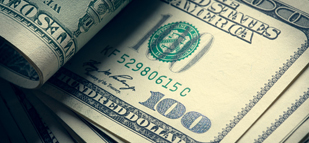
The dollar firmed against most major currencies on Monday after solid U.S. factory and consumer spending reports sparked a rally, while unease over the Ukraine crisis fueled safe-haven greenback demand as well. In U.S. trading on Monday, EUR/USD was down 0.50% at 1.3733.
The Commerce Department reported earlier that personal spending rose 0.4% in January, above expectations for an increase of 0.1%. Personal spending for December was revised down to a 0.1% gain from a previously reported increase of 0.4%.
The report added that personal income rose 0.3%, beating expectations for a 0.2% increase, after a flat reading in December.
Meanwhile, the core PCE price index, which is stripped of food and energy items, inched up by a seasonally adjusted 0.1% in January, in line with expectations, after rising 0.1% in December.
The core PCE price index rose at an annualized rate of 1.2%, above forecasts for a 1.1% increase, after rising at a rate of 1.1% in December.
Consumer spending is the single biggest source of U.S. economic growth, accounting for as much as two-thirds of economic activity.
The Federal Reserve pays close attention to personal income and spending when deciding the fate of monetary policy, and Monday's data prompted investors to assume the U.S. central bank will continue scaling back its monthly asset purchases as the year progress.
Fed asset purchases, currently set at $65 billion a month in Treasury and mortgage debt, aim to spur recovery by suppressing long-term borrowing costs, which weakens the dollar as a side effect by sending investors to stocks in hopes investing and hiring accompany rising equity prices.
The dollar also saw support after the Institute for Supply Management revealed that its manufacturing purchasing managers’ index rose to 53.2 last month from 51.3 in January, beating forecasts for a reading of 52.0.
The report attributed the rise to an increase in new orders after rough winter weather disrupted commerce at the start of the year.
The euro, meanwhile, came under pressure as escalating tensions over the crisis in the Ukraine sparked a broad-based selloff in risk assets.
Russian President Vladimir Putin over the weekend sent troops into the Crimea region.
The move sparked fears that the West will impose sanctions on Russia. Russia’s central bank hiked interest rates from 5.5% to 7% on Monday after the rouble fell to new record lows against the euro and dollar.
In the euro zone, data on Monday confirmed that the region’s manufacturing purchasing managers’ index declined to 53.2 in February from 54.0 in January. It was the first dip in five months, highlighting the fragile nature of the recovery in the euro area.
The rate of decline in France’s manufacturing sector eased in February, while activity in Germany’s manufacturing sector rose for the eighth straight month.
Elsewhere, the dollar was down against the yen, with USD/JPY down 0.35% at 101.43, and up against the Swiss franc, with USD/CHF up 0.34% at 0.8834.
The greenback was up against the pound, with GBP/USD down 0.51% at 1.6660.
In the U.K., data revealed that a strong upswing taking place in the U.K. manufacturing sector continued in February, with jobs growth in the sector accelerating to a 33-month high.
The Markit U.K. manufacturing purchasing managers’ index for February came in at 56.9, up from a revised 56.6 in January. Analysts had expected the index to tick down to 56.5.
A separate report showed that the number of mortgages approved in the U.K. rose to 76,947 in February, the highest level since November 2007, from 72,798 in January.
The dollar was mixed against its cousins in Canada, Australia and New Zealand, with USD/CAD up 0.15% at 1.1080, AUD/USD up 0.03% at 0.8930 and NZD/USD down 0.20% at 0.8367.
The dollar index, which tracks the performance of the greenback versus a basket of six other major currencies, was up 0.35% at 80.08.
No comments:
Post a Comment